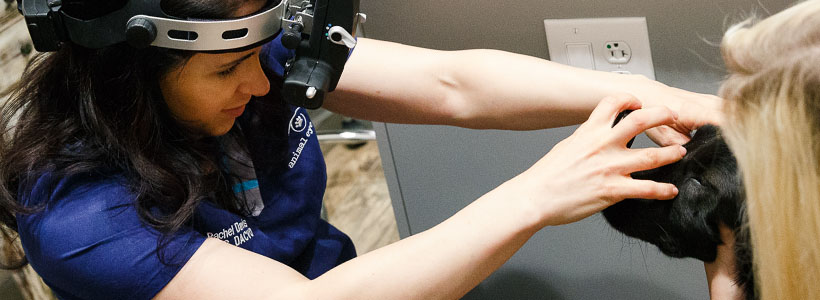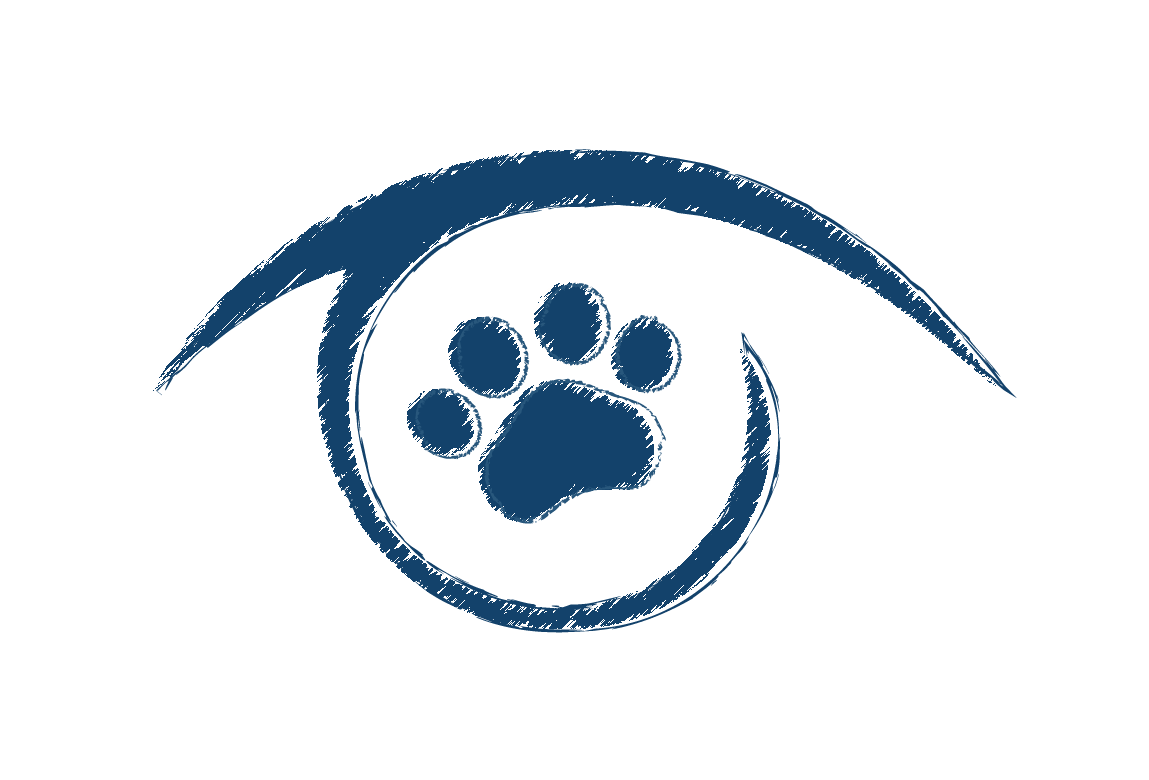Dry eye disease in dogs is a common problem in many dogs. This is a genetic condition causing low or no tear production. Tears keep eyes lubricated and help flush away debris. For dogs with dry eye disease (KCS – keratoconjunctivitis sicca) that do not have enough tears, the eyes get irritated and dry and are at risk for infections or scratches.
Q. What does dry eye disease (KCS – keratoconjunctivitis sicca) in dogs look like?
Dog with dry eye disease are not making enough tears, thus the eye tissues get irritated and inflamed because they are dry. This causes crusty, mucus discharge. Sometimes, the discharge even looks like pus. It’s usually worse in the mornings. Dry eye disease in dogs may also cause squinting and itching. Dogs will often rub their faces with their paws or rub along the couch or the carpet trying to relieve the itching.
Q. How is testing done for dry eye disease (KCS – keratoconjunctivitis sicca) in dogs?
A tear test is performed by using a soft piece of special tissue inserted into the bottom of the eyelid. We also look for other signs of dry eye disease in dogs like redness, discharge or irritation.
Q. How is dry eye disease (KCS – keratoconjunctivitis sicca) in dogs treated?
Dry eye disease in dogs is treated with eye medication to increase the tear production. Unlike tear replacers (or lubricating medication), these medications tell your dog’s tear glands to make their own tears. The medication work in almost all dogs. Because this is a life-long disease, we like to check in on your pup every once in awhile to make sure the tears are normal and no other eye problems are present. If for some reason, the medication doesn’t work, we can offer other options for treatment.
Q. I think my dog has dry eye disease, what should I do?
If you think your dog has dry eye disease or other eye irritation, you should schedule an appointment at our office. We would love to meet your pets and talk with you about any eye condition your pet may have. Come visit us!
Dry Eye Disease in Dogs – Photos
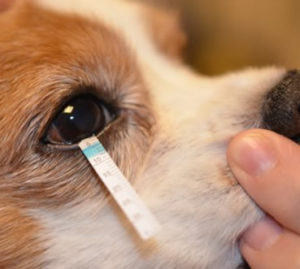
We check for dry eye disease in dogs by placing a small, soft piece of tissue paper under the eyelid.
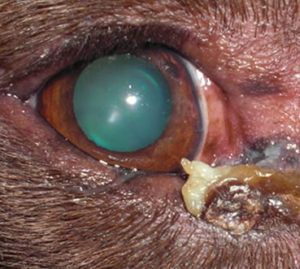
Dry eye disease (KCS -keratoconjunctivitis sicca) in dogs causes crusty, mucoid discharge as seen here. This dog’s eye is also red and has a haze (from being too dry).
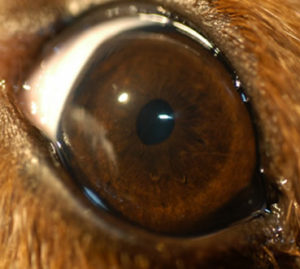
This dog’s dry eye disease (KCS – keratoconjunctivitis sicca) has been treated with medications. This dog’s eye is bright and shiny with no discharge or redness.
